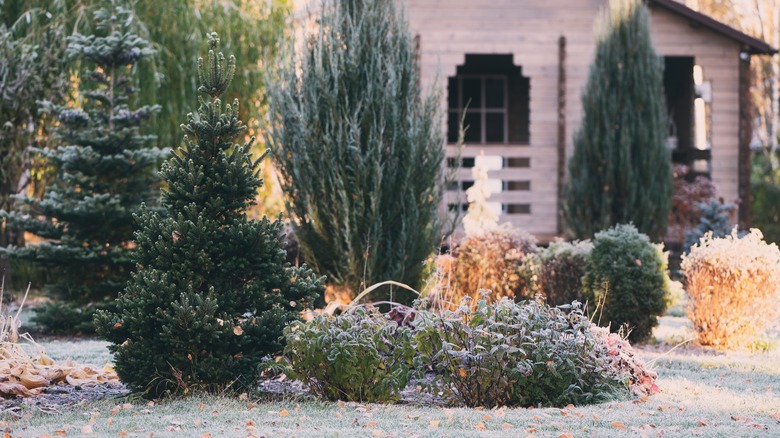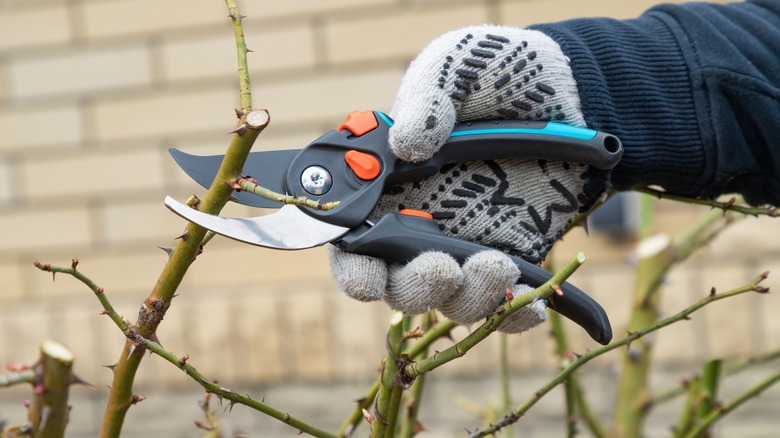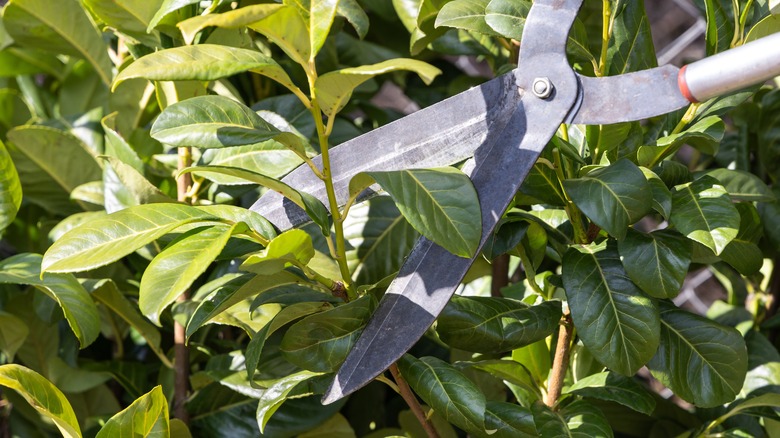How To Prune Bushes During Winter Dormancy (& Why It Matters)
If you live in a temperate climate, sometimes it can feel like there's not much to do in the yard in the winter beyond shoveling snow. But winter is the ideal time for a select few yard tasks, and that includes pruning. Many types of bushes, trees, and shrubs are best to prune in winter when they go dormant. Timing is important here because the pruning process can have a ripple effect on the plant's growth and health, which is why you should prune in late winter.
Each cut that you make while pruning is a small wound through which pests and pathogens can enter the plant. But when you prune in the winter, pests and pathogens are less active. There's less of a risk of insects getting into the wound or diseases spreading from plant to plant. The plant also has an easier time recovering from pruning when it's dormant, and it's left with plenty of energy for new growth when spring arrives. So, although it may appear as though you're cutting the plant back, pruning in the winter actually encourages new growth. That's in addition to the other benefits of pruning, such as maintaining the size and shape of the bush and protecting its overall health.
Prune in late winter for best results
Pruning helps protect bushes by removing dead, dying, diseased, and damaged branches, also known as the four D's. It's also an opportunity to remove branches that are in your way or risky for the plant's growth. One example is "suckers" and "water spouts," or stems that grow straight up or to the side without branching off. Another example is branches that overlap and rub together, which are at risk of developing wounds that could lead to disease. During winter, it's easier to choose branches to prune without much foliage in the way.
The best time of winter to prune bushes is late in the season just before spring. If you prune earlier, the cuts may dry out too much if it gets below freezing. Wait for drier weather to avoid waterborne diseases, and ideally, prune on a milder day to prevent cold damage.
Not all bushes are good candidates. If it's a blooming plant that flowers in the spring, it's better to avoid pruning it in the winter; otherwise, you'll lop off the stems that would have produced flowers. Summer- and fall-flowering shrubs and evergreen shrubs, however, are safe to prune in the winter.
Proper pruning technique
Depending on the bush and branch, it may be easiest to work with a hand pruner, shears, loppers, or a pruning saw. You can also trim hedges during winter dormancy, but for precise pruning, working by hand one branch at a time is best. Make sure your tools are sharpened and clean them with hot, soapy water before use, as well as after cutting diseased branches.
Working from the bottom to the top, remove unwanted branches, intersecting branches, and those that fall into the four D's. Cut all the way down to the node where the branch attaches to its source. Try to cut just above the "collar" where the branch begins to widen at the base, and make your cut at the collar's same angle. Leaving a longer stub can result in unhealthy branch regrowth and disease, and cutting further down also helps thin out the bush a bit and improve air circulation.
While pruning your plants, avoid the mistake of making too many cuts. Keep any branches that are vital for the structure of the bush, and aim to follow the natural shape of the plant. One rule of thumb is not to prune more than 25% at one time. However, specific requirements may vary by the bush's species and current condition. For example, to tame your overgrown shrubs, you can cut them back further, removing one-third or more of older stems down to the ground.


